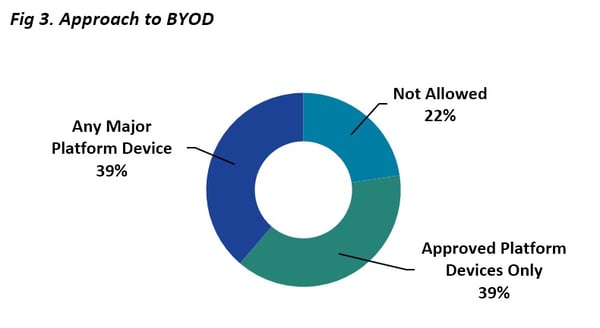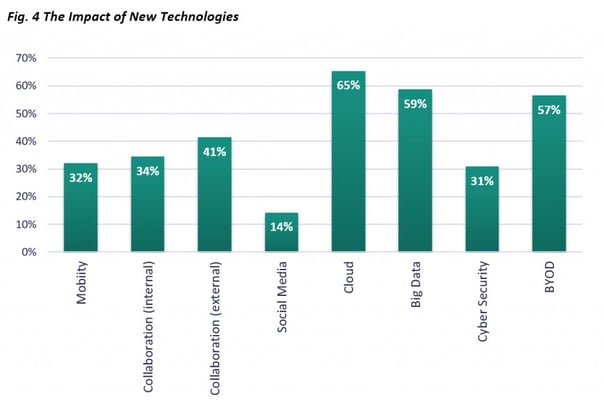
The Importance of Innovation in Legal Technology
The business-aligned model of Enterprise Legal Management requires a sophisticated IT infrastructure. It also requires an improved attitude about the integration of technology into the day-to-day operations of the corporate legal function. Traditionally, law departments have been reticent to adopt technologies into their daily operations. However, as those operational demands increase and a generational legal-management changeover occurs, we see attitudes and expectations about the role of technology shifting.
Today, managing counsel view technology as a critical enabler of success. Indeed, recent research we conducted on the attitudes of corporate counsel, for example, shows strong agreement with the notions that technology does in fact drive improved performance and that management recognizes the value of technology; however, perceptions about vendors’ ability to deliver both value and innovation demonstrate widespread frustration (see Fig.1). We’ve stumbled on a period of unsatisfied demand.

While law departments define a rich landscape of solution interests, they remain pragmatic in their technology investments. Law departments continue to invest in core technologies and capabilities, though we see an increasing sense of sophistication and innovation in the use, application, and integration of well-adopted disciplines in fresh approaches (see Fig. 2).

Of particular interest, our research shows that law departments assign significant value and priority in adapting deeply entrenched systems for data-driven decision-making and end-to-end operational efficacy. Technologies that help to capture, store, manage and archive work product and other content are being integrated with relational data management systems for integrated matter management and higher order institutional intelligence.
Intelligence is also the theme of the times: tools for reporting, key performance metrics, contextual indicators and business intelligence dashboards rate highly and drive significant investment. Correspondingly, the appetite for integrating practice-management systems across the legal enterprise is essential for the capture of quality matter spend and outcome data and analytics. Investment in DMS technology – the storehouse of actual legal work product – outpaces that of even hot-button Analytics solutions. Thus, as departments continue to seek intelligence models that “connect the dots,” we expect to see both the demand for and from ELM solutions to continue to escalate.
Legal IT also is continuing to invest in mobility as the trend towards a more distributed and flexible work environment (often referred to as the “results oriented work environment”) intensifies. From a vendor perspective, we see legal applications being adapted to support mobility, both in terms of accessibility and the user experience.
Law departments also are embracing so-called Bring Your Own Device (BYOD) policy. In fact, nearly 80% of law departments allow attorneys and other professionals to access work on either approved personal mobile devices or on any mobile device (See Fig. 3). Not surprisingly, BYOD and Mobility also rank among the highest factors LDO administrators cite as affecting law department investment priorities (see Fig. 4).

A number of other rising technology solution areas remain on legal IT’s radar (see Fig. 4). Collaboration software and services continue to advance significantly as important components of both internal work relationships (i.e., between colleagues and business clients) and outside service partners.

A continued emphasis on the use of Cloud-based, hosted solutions to extend the storage and accessibility of data, applications and work product “beyond the firewall” is also driving investment. Strongly analogous, though, cloud and “big data” solutions received the strongest rating in research we conducted recently, as reflected in Figure 4 above. In 2015, vendors continue to invest in the sophistication of “Big Data” analytics, including business intelligence dashboards, benchmarking and the ability to model operational metrics; we expect law department demand for innovative solutions and approaches – and spending on these component tools – will increase.


